
Minangkabau is an Austronesian language spoken by the Minangkabau of West Sumatra, the western part of Riau, South Aceh Regency, the northern part of Bengkulu and Jambi, also in several cities throughout Indonesia by migrated Minangkabau. The language is also a lingua franca along the western coastal region of the province of North Sumatra, and is even used in parts of Aceh, where the language is called Aneuk Jamee.

The Indonesian Wikipedia is the edition of Wikipedia in the Indonesian language. The Indonesian Wikipedia is the fifth-fastest-growing Wikipedia in an Asian language after the Japanese, Chinese, Korean, and Turkish language Wikipedias. It ranks 25th in terms of depth among Wikipedias. Its first article was written on 30 May 2003, yet its Main Page was created six months later on 29 November 2003.
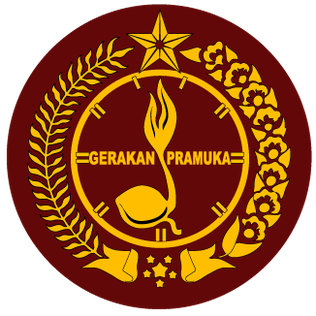
The Pramuka Movement of Indonesia, officially the Praja Muda Karana Scouting Movement, is the national scouting organization of Indonesia. Scouting was founded in the Dutch East Indies in 1912, and Indonesia became a member of the World Organization of the Scout Movement (WOSM) in 1953. Its membership is compulsory for students. It has 21,599,748 members, making it the world's largest Scout association.

Malay was first used in the first millennia known as Old Malay, a part of the Austronesian language family. Over a period of two millennia, Malay has undergone various stages of development that derived from different layers of foreign influences through international trade, religious expansion, colonisation and developments of new socio-political trends. The oldest form of Malay is descended from the Proto-Malayo-Polynesian language spoken by the earliest Austronesian settlers in Southeast Asia. This form would later evolve into Old Malay when Indian cultures and religions began penetrating the region, most probably using the Kawi and Rencong scripts, some linguistic researchers say. Old Malay contained some terms that exist today, but are unintelligible to modern speakers, while the modern language is already largely recognisable in written Classical Malay of 1303 CE.

Soenario Sastrowardoyo, more commonly known simply as Soenario, was an Indonesian politician, and diplomat, who served as the 7th Foreign Minister of Indonesia, from 1953 until 1955, during the First Ali Sastroamidjojo cabinet, under Prime Minister Ali Sastroamidjojo. He was one of Indonesia's leading figures during the Indonesian independence movement and served as an administrator for the Perhimpoenan Indonesia association in the Netherlands.
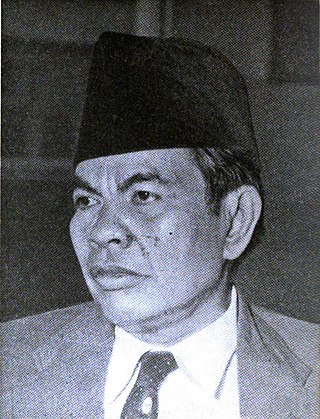
Mohammad Yamin was an Indonesian poet, politician, and national hero who played a key role in the writing of the draft preamble to the 1945 constitution.

Indonesian literature is a term grouping various genres of South-East Asian literature.

Ki Soegondo Djojopoespito was an Indonesian politician who became the Minister of Societal Development in the Halim Cabinet.
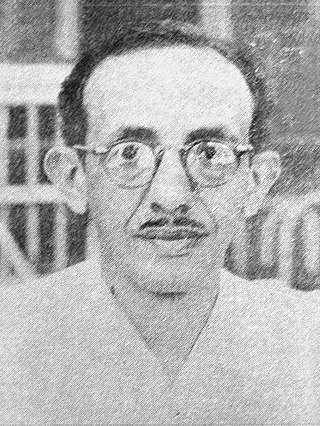
Abdurrahman Baswedan, also known as AR Baswedan was a nationalist, journalist, Indonesian freedom fighter, diplomat, and writer. Baswedan was a member of the Central Advisory Council during the Japanese occupation of the Dutch East Indies and of the Investigating Committee for Preparatory Work for Independence (BPUPK), served as Deputy Minister of Information of the Third Sjahrir Cabinet, a member of the Central Indonesian National Committee Working Group, a member of parliament, and also a member of the Indonesian Constitutional Assembly. Baswedan was one of Indonesia's first diplomats who successfully gained de jure and de facto international recognition for the Republic of Indonesia. He was awarded the title of National Hero of Indonesia in 2018.

Ignatius Joseph Kasimo Hendrowahyono was an Indonesian politician and national hero. He was a co-founder of the Catholic Party and was himself a Catholic of Javanese descent like his fellow party confrère, Fredericus Soetrisno Harjadi.
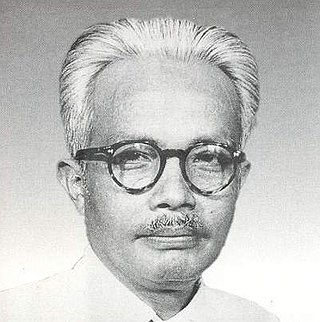
Ki Sarmidi Mangunsarkoro acted as the Minister of Education and Culture of Indonesia in 1949 until 1950. He is now regarded as a National Hero of Indonesia.

Jong Islamieten Bond (JIB) or Islamic youth association was a youth organization during Dutch East Indies ruling established in Batavia on January 1, 1925. The organization was established by Indonesian young students with the first goal to provide courses on Islam to Muslim students to engage the sense of brotherhood amongst the educated Muslim youth from different regions of the archipelago who were previously members of local associations, such as Jong Java, Jong Sumatra, and others.
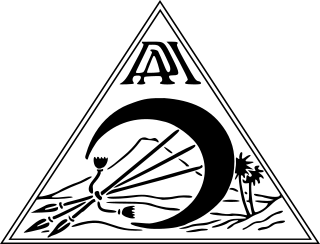
The Indonesia Arab Association (PAI) is an association of Arab Indonesians founded by Abdurrahman Baswedan in 1934 in Semarang to encourage the allegiance of Arab immigrants to Indonesia.

The Youth Pledge Museum is a historic museum of the independence struggle of the Republic of Indonesia. It is located in Jalan Kramat Raya No.106, Central Jakarta and managed by the Ministry of Culture and Tourism. This museum is open for public, every Tuesday until Friday from 08.00 until 15.00, every Saturday and Sunday from 08.00 to 14.00 Western Indonesian Time, and every Monday and national holiday, this museum is closed for public.
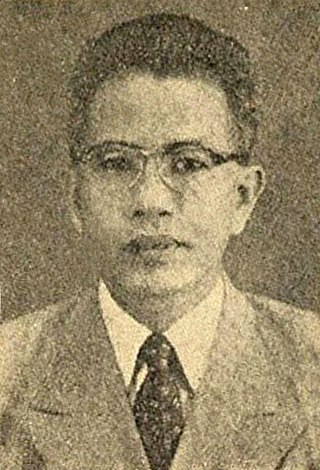
Mohammad Tabrani Soerjowitjitro was an Indonesian journalist and politician. He originated from the island of Madura and received journalistic education in Europe. In his early journalistic career, Tabrani was a major proponent of the Indonesian language as a national language. Later on, he became the editor of the Pemandangan newspaper and promoted the independence of Indonesia through parliamentary means.

Dra. Augustine Magdalena Waworuntu, was an Indonesian politician who became the first post-federal Indonesian mayor of Manado and the first female mayor of Manado.

Feminism in Indonesia refers to the long history of discourse for gender equality to bring about positive social change in Indonesia. The issues women in Indonesia currently are facing include gender violence, underage marriages, and lack of representation in the political system. Feminism and the women's right movement began during colonial Indonesia under Dutch rule and were spearheaded by the national heroine Kartini, a Javanese noblewoman who advocated for the education of all women and girls regardless of social status. In the early 19th century, women's rights organizations and movements were allowed to developed under Budi Utomo, the first Indonesian Nationalist organization. Modern day Indonesian feminism include and are influenced by both fundamentalist and progressive Islamic women's organizations.

Jong Batak Bond, sometimes simply called Jong Batak, was a short-lived but influential Batak intellectual organization founded in Batavia, Dutch East Indies in December 1925. Like Budi Utomo, Jong Java and other such organizations, its members consisted of native Indonesian students in Dutch-language schools interested in advancing their ethnic group and Indonesian nationalism at the same time. Notable members of the group include Amir Sjarifuddin Harahap, Todung Sutan Gunung Mulia Harahap, Sanusi Pane, Saleh Said Harahap and Arifin Harahap.
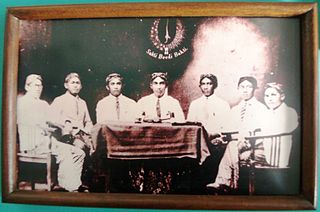
Jong Java, 'Young Java', was a Dutch East Indies youth organization founded on March 7, 1915 by Satiman Wirjosandjojo at the STOVIA building under the name Tri Koro Dharmo. It was founded in response to the perceived elitism of the Budi Utomo movement by many young people at the time.





















